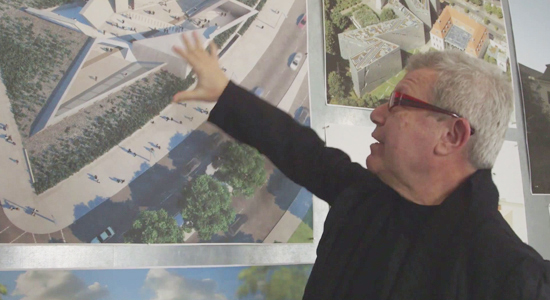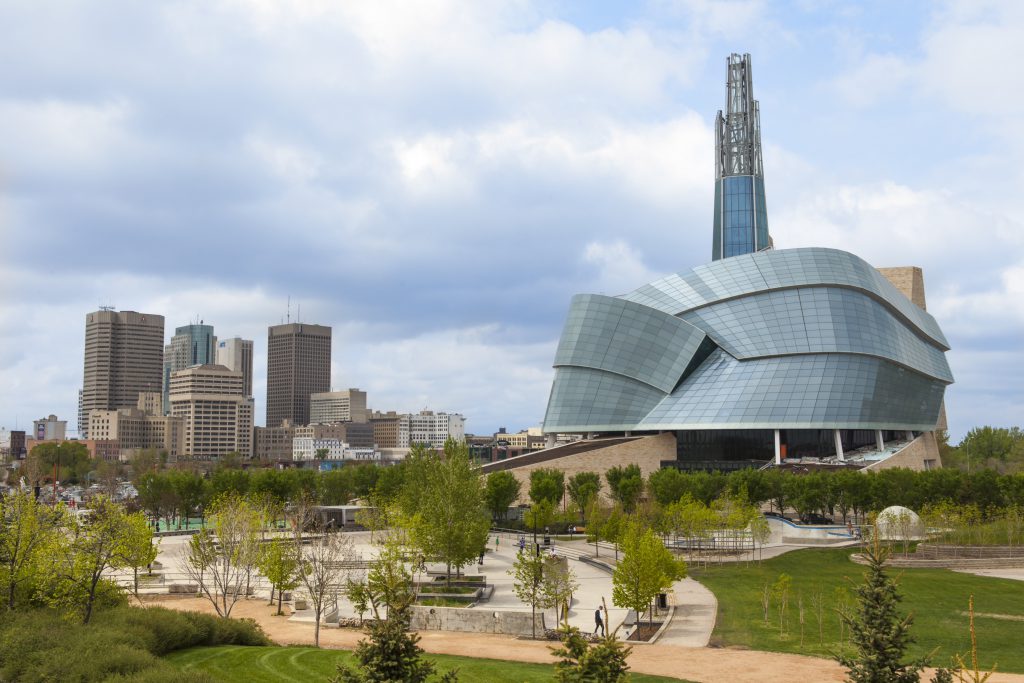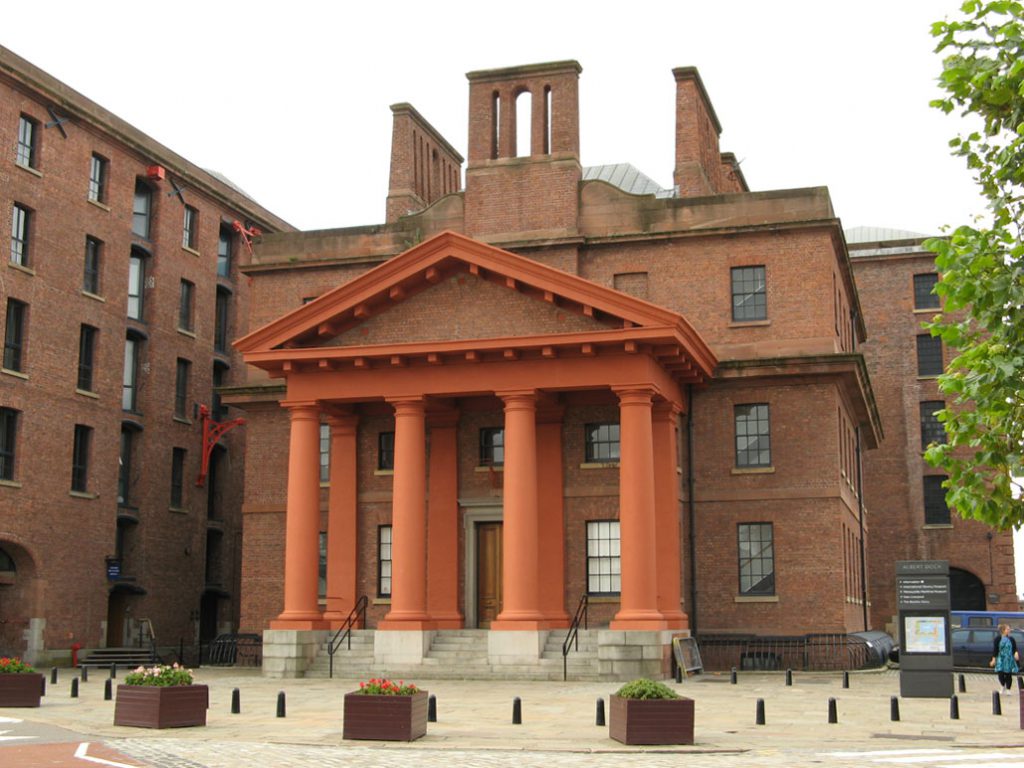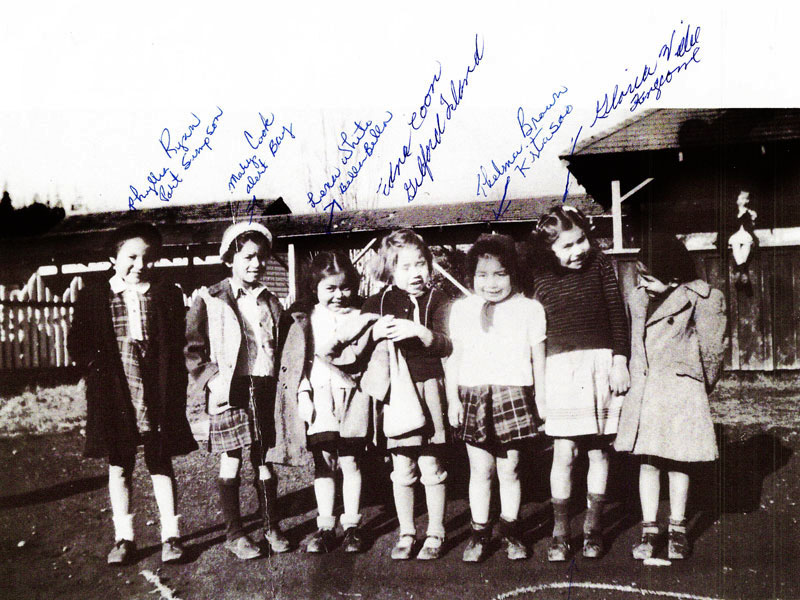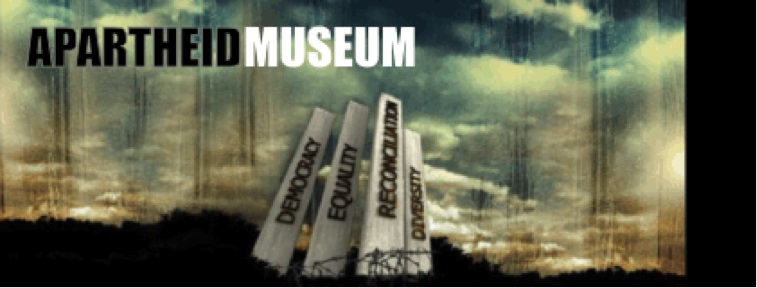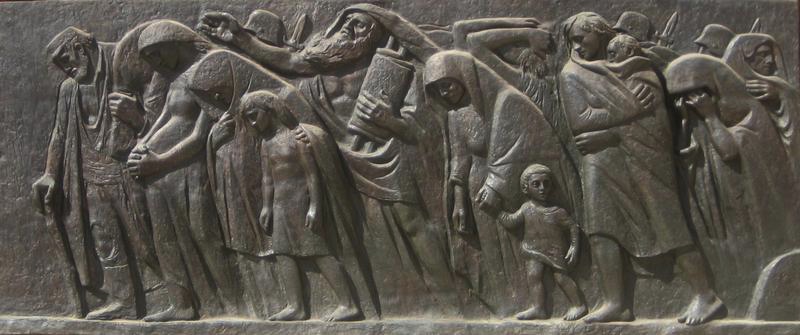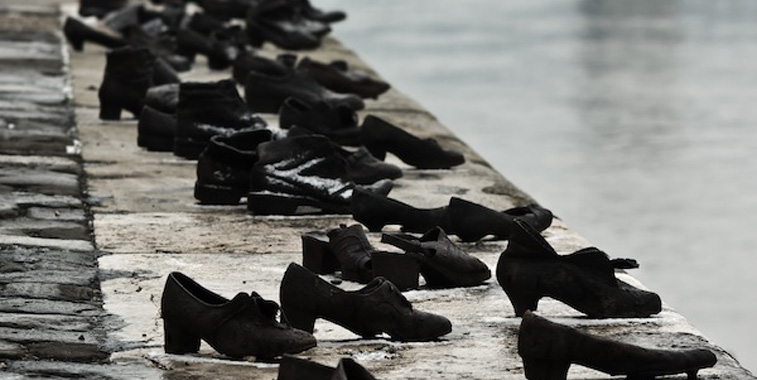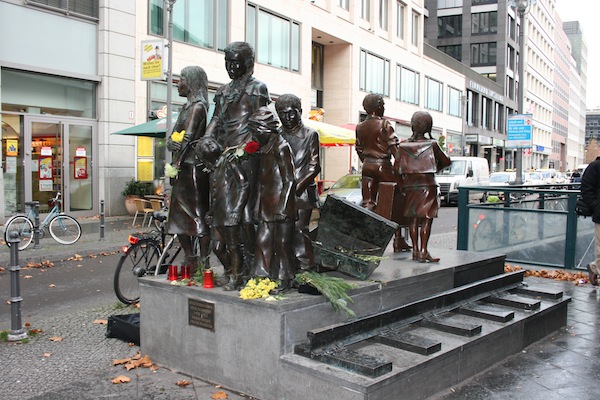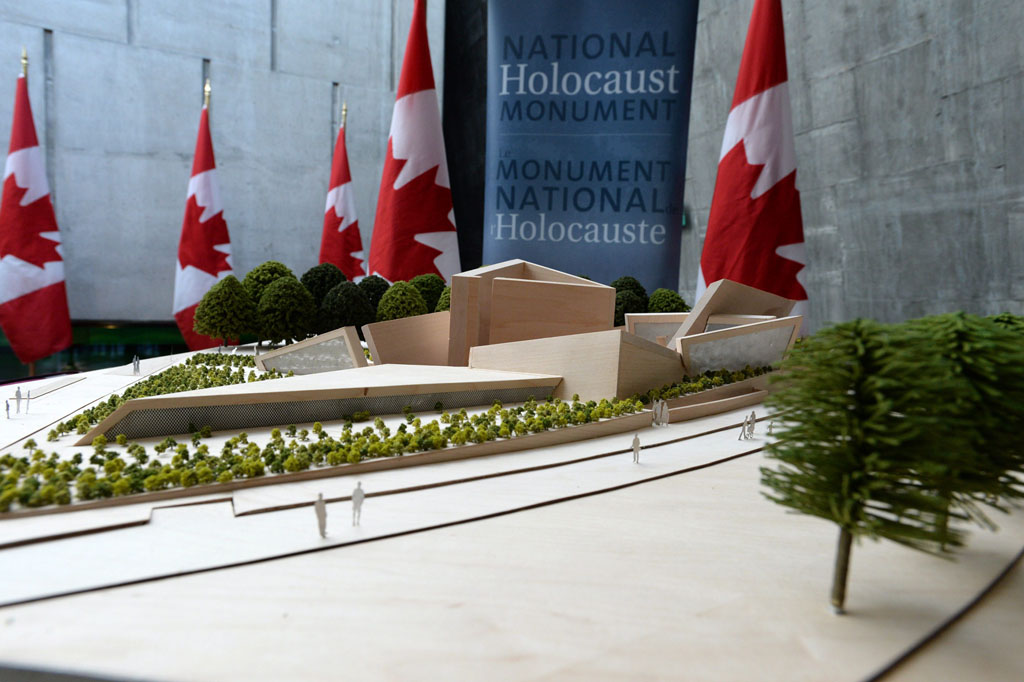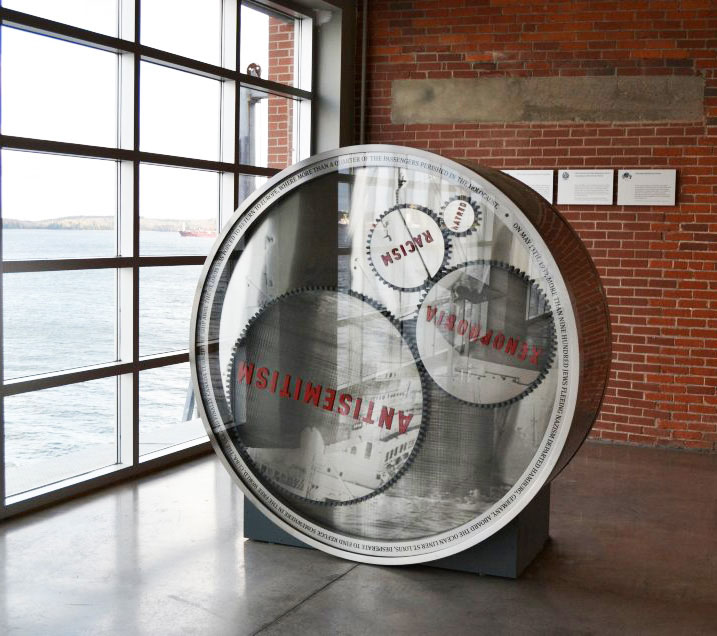Educator Tools

 Ask yourself:
Ask yourself:
- How do modern museums enhance and further our understanding of human rights?
- How does the visual impact of art encourage us to further explore issues of human rights?
This chapter begins by exploring the transformation of museums from places designed to preserve the past to institutions that ask us to look at the oppression of groups of people. The mandate of these exhibits is to prevent further violations of human rights. This study begins with written and visual examples of the museum at Auschwitz and provides an authentic simulation of life in the concentration camps. You will then be asked along with other students to examine why the 300 Holocaust museums, located on six continents, differ from each other.
The chapter draws your attention to a number of newer museums devoted to specific issues of human rights. These issues include the slave trade, apartheid in South Africa and the mistreatment of Indigenous people in Canada. The last section of the chapter focuses on a picture study and asks you to examine a number of memorials to determine the emotional impact they have on the observer.
Did you know?
The first known museum was established in Alexandria, Egypt in the third century. Today, there are more than 55,000 museums in 202 countries. For many centuries, the purpose of museums was mainly to care for objects of cultural, scientific, and artistic importance to the community. As well, museums were places where scholars could research the past and where the community could gain understanding of their local or national history.
Today, museums have changed alongside society. There is a growing belief that in addition to their original mandates, museums should now be places that foster peace, democracy, and transparency. By representing our diverse society, they can also promote unity and cultural understanding. In the next few pages, we will look at some museums whose main focus is to promote knowledge, discussion, and debate about human rights.
A major example of a museum focusing on human rights, is the museum on the site of the former Nazi death camp at Auschwitz in Poland. The Auschwitz-Birkenau Memorial and Museum is located on the actual site where over 1.1 million people were gassed to death by the Nazis during World War II. Of these people, 1 million were Jews – members of a religious and ethnic group Hitler attempted to exterminate. You can take a full tour of the museum at Auschwitz on a number of YouTube sites.
At the Auschwitz-Birkenau museum, displays are mounted in the barracks in which prisoners were held. The walls of the barracks are lined with floor to ceiling display cases that hold thousands of articles taken from the prisoners before they were exterminated. One display case holds over 110,000 pairs of shoes taken from the prisoners when they arrived at Auschwitz. Another overflows with over 3,800 suitcases, many of which have the prisoners’ names still marked on them. The visitor to this museum, looking at display cases packed full of baby shoes or filled with eyeglasses can begin to truly understand the impact of the Holocaust. This is a museum that leads to thought and discussion about human rights and promotes awareness and discussion among young people. The museum at Auschwitz and other Holocaust museums include learning centres that provide lessons and curriculum materials for classrooms across the world.
Sometimes you will see the word “Shoah” used interchangeably with the word Holocaust. Shoah is the Hebrew word for catastrophe and was the earliest word (along with the Yiddish word for destruction, “Churban”) used by survivors to explain what happened in Europe.
Elie Weisel, a Holocaust survivor and noted author, wrote the following about the Auschwitz-Birkenau museum:
“Open your heart, visitor. And your mind. And your soul. As you walk through the exhibition, “Shoah,” (Holocaust) and you are enveloped by the sights and sounds of the past, hear the voices of the victims, see the drawings of the children, touch the names of the murdered, take with you a message that only the dead can give the living. That of remembrance.”
Other Holocaust Museums
There are over 300 Holocaust museums and memorials on six continents. The magnitude and cruelty of the Holocaust led Jewish communities and some governments to want to honour those who died in the Holocaust and try to better understand this calamity to prevent it from happening again. These museums and memorials have the goal to encourage people to stand up against genocide wherever it occurs. Being located in different countries, Holocaust museums are often very different from each other in size, architecture, and in what they choose to include and what they choose to omit.
ACTION 1
Discuss
Holocaust Museums
Use the diagram below to discuss why Holocaust museums can be very different from each other. How would each of the following factors determine what artifacts and displays the curator chooses for each museum?
| The country where the museum is located |
| The amount of money you have available |
| Whether your country was occupied by the Nazis |
| How many survivors or their families live in your community |
Some Different Holocaust Museums
The Shoah Foundation’s Visual Archive
The stated purpose of this video museum is to overcome prejudice, intolerance, and bigotry, and the suffering they cause through the educational use of the Foundation’s visual history testimonies. Film director Steven Spielberg believed that the best way to understand is to record the events through survivor testimonies. The archive now includes more than 52,000 testimonies of Holocaust survivors and witnesses, many of which can be watched on YouTube. The Foundation has now completed indexing over half the testimonies as a first step in making the videos available to everyone. They hope to complete his project over the next few years. You can see a video about the Shoah Foundation on YouTube.
The Holocaust Museum, Paris
A Holocaust museum noted for its architecture opened in Paris in 2005. The structure at the entrance of the museum looks like a walled fortification. The walls in front of the entrance to the museum are engraved with the names of 76,000 French Jewish men, women, and children who died without a proper burial. The crypt contains the ashes of victims collected from the camps.
ACTION 2
Discuss
Human Rights Museums
As you read about museums, work with a partner to make a list of five questions you have about each museum. At the end of the discussion, try to find the answers to each of your questions by referring to the museum’s website.
The Canadian Museum for Human Rights (CMHR)
The Canadian Museum for Human Rights (CMHR) is the only museum in the world solely devoted to human rights awareness and education; it stands as a beacon for visitors from around the globe. As an “ideas” museum, the CMHR tells powerful stories about human rights events and champions, inviting participation in the ongoing human rights dialogue and making educational programming an important part of the visitor experience.
Beginning in 2020, the CMHR shocked and disappointed Canadians with revelations of discrimination against Indigenous and Black employees, sexual harassment of female employees and volunteers, and the removal of content about gays and lesbians from tours commissioned by homophobic groups and schools–all of which went on for years. The museum’s CEO left his position and some management was replaced, an internal investigation was conducted, and the museum claims to have solved the problems.
Media Coverage of CMHR Revelations
Homophobic Policy
Told to Censor Gay Content
Stop Lying CMHR Campaign
Sexual Harassment Ignored
Black and Indigenous Employees Primary Targets
The International Slavery Museum
This museum was established in 2007 on the 200-year anniversary of the abolition of the slave trade in the United Kingdom. This museum covers the impact of the transatlantic slave trade but has expanded to discuss freedom and identity, underdevelopment in Africa and the Caribbean, and racial discrimination in the country at large. This museum is considered of such significance that it is planning to expand into their new grand building pictured below as part of a 10-year Liverpool waterfront development project.
The Museum of Anthropology at the University of British Columbia
This museum focuses on the Indigenous people of British Columbia as well as other diverse communities. This picture is from one of their exhibits on residential schools in British Columbia.
The Apartheid Museum in Johannesburg, South Africa
This museum opened in 2001. A series of 22 individual exhibits takes the visitor through an emotional journey of a state-sanctioned system based on racial discrimination. The museum shows how South Africa is coming to terms with its past and working toward a future that all South Africans can call their own.
The pillars outside the Apartheid Museum say Democracy, Equality, Reconciliation, and Diversity. This very large museum complex is entirely devoted to the history of state-approved racial discrimination.
In 1948, as people the world over realized the scope, cruelty, and devastation of the Holocaust, the United Nations issued The Universal Declaration of Human Rights. Ironically, the apartheid system was also established in South Africa that same year.
UNITED NATIONS UNIVERSAL DECLARATION OF HUMAN RIGHTS
- We Are All Born Free & Equal
- Don’t Discriminate
- The Right to Life
- No Slavery
- No Torture
- You Have Rights No Matter Where You Go
- We’re All Equal Before the Law
- Your Human Rights Are Protected by Law
- No Unfair Detainment
- The Right to Trial
- We’re Always Innocent Till Proven Guilty
- The Right to Privacy
- Freedom to Move; We all have the right to go where we want in our own country and to travel as we wish
- The Right to Seek a Safe Place to Live
- Right to a Nationality
This simplified version of the thirty Articles of the Universal Declaration of Human Rights has been created especially for young people.
ACTION 3
Discuss
A Gallery of Human Rights
After you have discussed the basic human rights outlined in the United Nations Charter of Human Rights, organize the class into groups with three students each.
As a group, select three categories of human rights that you consider to be most important to you. Discuss how these three rights are relevant to your school or community.
As a group, select one of your three choices that you feel should be the focus of its own human rights exhibit. Create a poster advertising the exhibit you think is important. Your poster should have the following components:
- A clear indication of the human right to which your exhibit is devoted
- A statement of why that right is so important
- Visuals highlighting that right. These may include drawings, pictures, newspaper clippings, poetry, cartoons, editorials, letters, and whatever visuals you feel will help others understand the importance of this human right.
- When your posters are complete, you may wish to mount them in the corridors near your classroom and invite other classes to tour your Gallery of Human Rights.
- You may also wish to take pictures of your posters and publish them in your school newsletter or your local newspaper.
ACTION 4
A Century of Genocide: Museum Exhibit
You are planning to create posters to support a special exhibit entitled, A Century of Genocide: 1915 to 2015. The purpose of the exhibit is to recognize additional historical situations from this time period that are not featured in permanent collections. The exhibit should show how the events and actions of people in power met the criteria for being called acts of genocide.
Do
Creating A Museum Submission
- Groups of three will be formed based on the following roles:
- Team Planning Manager
- Engages in research and writing of information
- Ensures that the team functions in completing the task on time
- Reports back to the teacher with any questions/needs from the team
- Coordinates the physical assembly of the poster
- Team Design Manager
- Engages in research and writing of information
- Responsible for consultation with group members for the design and layout of the poster
- Sees that there is consistency in production of the various elements
- Team Presentation Manager
- Engages in research and writing of information
- Develops the talking point script for the gallery walk
- Uses the talking points to educate observers about the group’s poster
- Team Planning Manager
- Each group will be assigned one of the following situations to research:
- The government of Josef Stalin in the USSR, 1932-1939
- The government of Idi Amin in Uganda, 1969-1979
- The government of Yahya Khan in Bangladesh, 1970-1971
- The government of Pol Pot in Cambodia, 1975-1979
- The government of Yakubu Gowan in Biafra, 1967-1970
- The government of Charles Taylor in Liberia, 1989-1996
- The government of General Suharto in East Timor, 1975-1998
- The government of Efrain Rios Montt in Guatemala, 1982-1983
- The government of Saddam Hussein in Kurdistan, 1987-1989
- The government of Omar al-Bashir in Darfur, 1999-2003
- Research will be conducted by the group starting with the 5Ws: who, what, why, when and where. Additional questions will be developed by the group to help analyze the actions of the leaders (e.g., do the actions of the government meet the criteria of genocide?).
- The group needs to create an annotated bibliography of the 3 to 5 best sources of information. Why were these sources useful?
- The poster should be around 18 x 24 inches in size. Consider the following in creating your posters:
- A map to show where the country is located
- Pictures of key individuals
- A background fact sheet: population of the country, key features of the country, events that took place during this period, and a timeline
- Pictures that might support the group’s interpretation of events
- An organizer that helps one understand how the event researched meets or does not meet the criteria of genocide
- Use the feedback rubric to guide the development of your poster
- Before final submission of your poster your group will act as “critique friends” with another group. You will explain your poster and your friends will offer suggestions on how to enhance your poster before final submission
- The class will do a gallery walk of the posters with the Team Presentation Manager explaining the key features of your poster to the viewers
- After the posters are submitted and posted in your classroom or designated area, each individual in your class will nominate one poster in a 150-word letter. The selected poster will become part of the permanent collection of the Centre. You cannot nominate your own entry. State the criteria you used for making this judgment and how this nominated poster meets these criteria.
See below – Feedback rubric for critique friends was built around the achievement chart and may be used for your consideration.
| Museum Exhibit Feedback | ||||
|---|---|---|---|---|
| Name of submission: | Reviewers: | |||
| Criteria | Level 4 | Level 3 | Level 2 | Level 1 |
|
Communication: Elements of a Poster
|
|
|||
|
Knowledge: Quality and Quantity of Information
|
|
|||
|
Thinking: Relevance of Materials Selected
|
|
|||
|
Inquiry: Research
|
|
|||
We really liked this poster for these reasons:
We did not understand this or need more information about this:
We would suggest improving your poster by:
The thing that we will remember the most about this poster at this time is:
Signed by your critique friends:
ACTION 5
Do
Memorials and our Understanding of Human Rights
While museums encourage our understanding of human rights by allowing us to spend time seeing, studying, and interacting with exhibits over several hours of several visits, memorials tend to have a more immediate and dramatic impact on us. A memorial is a structure designed to honour or remember a person or event that is important to the community. Often memorials are works of art using forms and images to relate the story they want to tell or generate discussion the artist hopes will result from viewing it. There are hundreds of memorials across the world to commemorate those who died, with the goal of making us think of ways to ensure this does not happen again.
From the following pictures select the memorial that is the most meaningful to you and write a short paper about it:
- Explain what you see in the memorial
- How does the memorial have an impact on your understanding of human rights?
A. The Last March, Jerusalem
This memorial is a bronze relief depicting the mass deportation of Jews to concentration camps. You will see that the memorial shows old people, children, and men and women of all ages. What does this memorial say to you?
B. Shoes on the Shores of the Danube, Budapest, Hungary
This memorial is made up of 60 pairs of iron shoes, each attached to the cement platform. The memorial commemorates the lives of those Jews who were shot into the Danube River by the Hungarian Arrow Cross, a fascist organization.
Shoes were valuable possessions by 1944, close to the end of the war, so the prisoners were told to take of their shoes before they were shot into the river. This simple memorial is very powerful.
C. Trains to Life, Trains to Death, Berlin, Germany
This memorial commemorates two events. As you observe the photo, the children on the left represent the 1.5 million children who died in the Holocaust. The children on the right represent the 10,000 children who were granted entry into England and thus survived the Holocaust.
Two Memorials in Canada
A new Holocaust Memorial in Ottawa was inaugurated on September 27, 2017, by Prime Minister Justin Trudeau. The concept design is by Daniel Libeskind (who designed the Ground Zero Memorial in New York and the Jewish Museum in Berlin), Canadian photographer Edward Burtynsky, landscape architect Claude Cormier, and historian Doris Bergen. The design represents an elongated Star of David, a reminder of the yellow stars Jews were forced to wear during the Holocaust.
Memorial to the Jews on the MS St. Louis
Daniel Libeskind’s Wheel of Conscience, at Canada’s Immigration Museum in Halifax at Pier 21, memorializes the voyage of the MS St. Louis (see unit three; chapter two). Between 1928 and 1971, most refugees and immigrants arrived in Canada at Pier 21. Like many countries during depression and war, Canada’s immigration doors were closed during the administration of Prime Minister William Lyon Mackenzie King. After WWII, when the exclusionary immigration policies were revised Pier 21 was reopened.
The steel memorial has four gears with interlocking teeth that enable it to be turned by a motor. The words Hatred-Racism-Xenophobia-Antisemitism are shown in relief on the front. Each wheel operates at different speeds and combined, the 3 smaller gears move the largest one of Antisemitism. As the gears turn, they recreate the image of the ship at set intervals.
Every effort has been made to gain permission from copyright holders to reproduce borrowed material. The publishers apologize for any errors and will be pleased to rectify them in subsequent reprints and website programming.
Educator Tools


